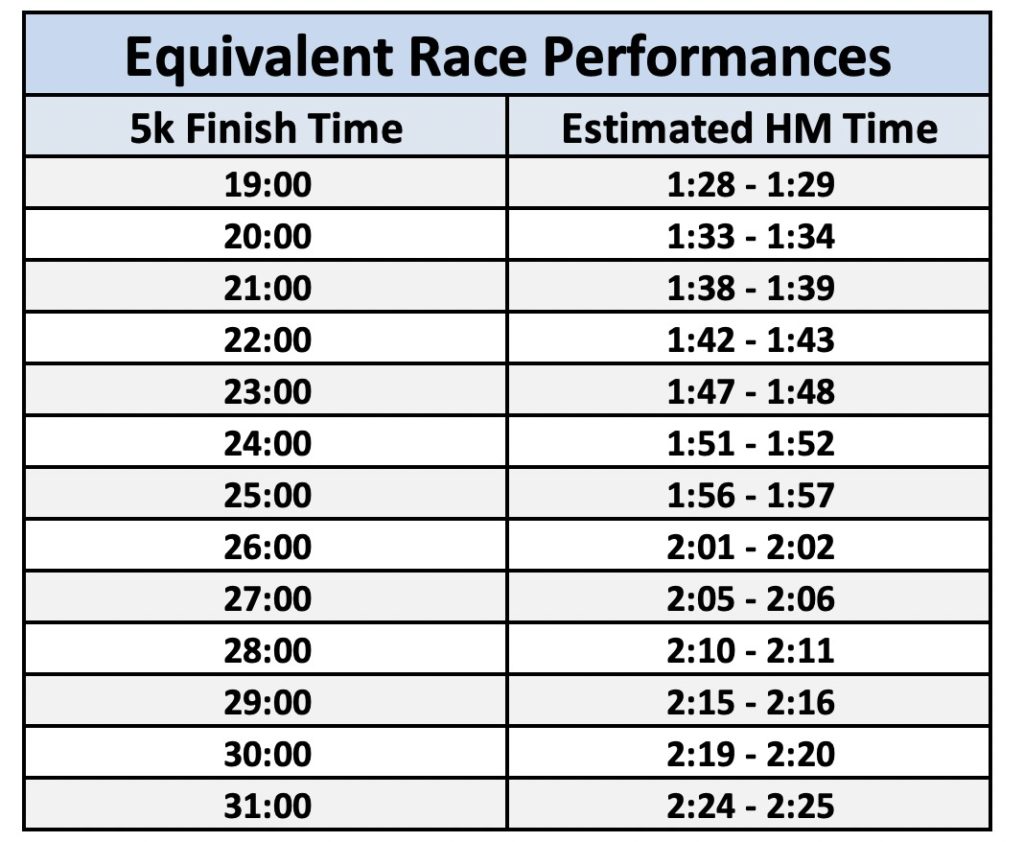Running is a uniquely objective sport because at its most fundamental, it’s all about the numbers: mileage, workout splits, and race finish times.

Of course, most of us run for far more meaningful and valuable reasons than “the numbers” but today we’re just going to talk about the performance side of running.
Running relies on the cold, hard measurements of time – rather than on the subjective whims of a coach or teammate.
Perhaps that’s why I was initially drawn to cross country after being a basketball player. There were so many times when I had no control:
- The coach didn’t put me in the game for as long as I wanted
- A teammate didn’t pass me the ball or run the play that we practiced
- Mistakes by other players cost the game
Even though my first love was basketball, it was extraordinarily frustrating at times.
With cross country, everything was different. It was refreshing to immerse myself in a sport where success, failure, and everything in between was measured to the hundredth of a second.
You either ran faster than the guy next to you or you didn’t. And the outcome was measured by a fully automatic timing system that was more accurate than a human being. I didn’t rely on the call of a referee, or umpire, or coach. I was in control.
Because of this objectivity, running is a numbers sport. And it’s not just about finish times.
Runners are always tracking the many metrics that exist in running. Sometimes that’s long run progressions, weekly mileage, or total vertical gain.
Other times, we love studying minutiae like vertical oscillation, ground contact time, or heart rate variability.
But today I want to focus on the most popular metric there is in running: finish times.
That’s because the most common question I receive is, “how fast can I run?”
The question comes in many forms:
- Do you think I can run a sub-20 5k?
- I’m trying to PR by 9 minutes to qualify for Boston; can I do it?!
- A 1:59 half marathon is my dream. Can you help me get there?
My goal here is to help you learn how to determine an appropriate finish time in any race distance. So the next time you’re planning a big race, you know how to pace yourself.
Let’s dive in.
The Concept of Equivalent Race Performances
The best predictor of what you’re capable of on race day is a recent race performance.
Race a variety of distances frequently and you’ll always be able to fairly accurately predict a finish time.
But too often, runners try to use their training to predict a finish time. I’ve heard it all:
- “My easy running pace is about 8:30/mile. What could I race a 10k in?”
- “Sometimes I can push a 5-miler and finish under 40 minutes. Do you think I’m ready for a half marathon PR?”
- “I usually do a fartlek like 10x1min on the treadmill at 6:30 pace. Could I run a sub-20 5k?”
Honestly, I have no idea. And no coach will be able to tell you much from training data like this.
But a race (any race!) is uniquely different because it’s a maximum, 100% effort. It’s your best possible finish if you give the race your all.
Let’s see an example. If you recently ran a 5k PR in 25:00, then you’re probably ready to run about 52:00 in the 10k. These are equivalent race performances.
Based on your 5k finish time, here are even more estimates (this time for the half marathon:

Here you can see a cross-section of finish times that are competitively equivalent.
To Get Faster, Get Faster
It seems like every week I meet a runner who has a big marathon goal. To meet that goal, they run 2-3 marathons per year.
But your capability as a runner is better built by training for a variety of race distances.
Remember: fitness is fitness.
Rather than solely racing marathons, switch up your training to focus on improving your 5k finish time. Or half marathon. Or 10k. Or whatever. Just focus on getting faster!
Because a fast runner will always race fast finish times – even if that race is a new distance that they’ve never run before. And shorter distances (like the 5k) are far easier to run well than longer distances (like the marathon).
This is when the concept of variety can be applied to your season planning:
- If you’ve spent 1-2 seasons preparing for one type of race, it’s time to focus on a different distance
- Dedicate yourself to something new: trail races, an ultramarathon, obstacle course racing, or even a triathlon
Training for different types of races is not just mentally exciting but it forces you to run different types of workouts.
For example, marathon training requires high mileage, consistent long runs, and aerobic workouts. But a 5k requires a difference balance of mileage and long runs with a dramatically more intense progression of workouts.
Even if you’re a marathoner at heart, don’t mistakenly believe that if you’re not running big miles and high mileage long runs that your marathon in 6-12 months will suffer.
Indeed, it’s quite the opposite. Maintenance of your aerobic base is relatively easy – and you’ll be doing that while layering 5k-specific speed on top of that endurance.
The result? A dramatically faster runner who brings a more varied skill set to the marathon.
How to Run a Sub-20 5k
I want to give you a concrete example of training milestones and equivalent performances for a specific goal: breaking 20 in the 5k.
This is a common time-barrier for runners to focus on for this race distance.
And for good reason: you’re going to like a 5k PR that begins with a 1 instead of a 2 far more!
I recorded a quick video to go into this specific example in more detail:
You’ll see that the goal is approached methodically and patiently:
- First, you focus on training metrics (mileage, long runs, pacing)
- Next, you start racing a variety of distances and different types of races
- Finally, once you’re close, you begin running 5k-specific workouts and chase a sub-20 finish time
The goal is to always focus on getting faster, no matter the race distance. That helps you get faster – no matter the race distance!
I use this approach with many of my runners and it helps me not only predict their performances, but help them achieve “unbelievable” results:
“It’s amazing how on-target you were with your prediction. I finished 4:11:34. I have to say the training was excellent, and I’m back at work and not in too much pain which says a lot.
A year ago I would have never imagined running 4:11 let alone finishing the marathon. Thanks for your help!” –Jesse
“18 months ago, I approached you with what I thought was an outrageous goal: to get my post-two-kids body into good enough shape to crack the4:00barrier in the marathon.
I got two PR Race Plans and finally,Saturday, the big pay-off:3:57:28! That time was actually good enough to win my age group! It was an amazing race, I felt so strong throughout, I negative-split the race, and my fastest mile was actually mile 26, at8:35. I couldn’t believe it!” – Dena
“Hi Jason, I took my first PT test for the Army today. It was a diagnostic run and I managed to run 2 miles in 17:45. I’ve never ran 2 miles that fast before. Prior to doing your plan I was at 23 something. I honestly didn’t think I could run that fast.” –Trisha
The writing is on the wall:
If you want to race fast, always be training to race fast (no matter the distance). You’ll be prepared for whatever race you’d like to register for – and likely, a lot faster than you think!
To experience this phenomenon yourself, browse Strength Running’s Training Programs. We have something for everyone.